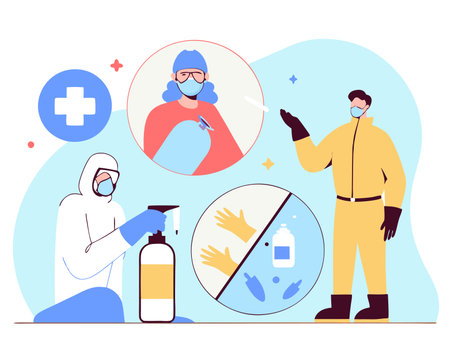Understanding Laser Technology and Skin Types
As someone who has personally journeyed through the world of laser treatments, Ive learned that understanding how different technologies interact with various skin types is crucial—especially when it comes to darker complexions. My curiosity led me deep into the science behind lasers, where I discovered the importance of the Fitzpatrick scale—a system used widely in the UK to classify skin by its response to ultraviolet light. This scale ranges from Type I (very fair) to Type VI (deeply pigmented dark brown or black skin). For those with darker skin tones, such as Fitzpatrick Types IV to VI, there are unique considerations that cannot be overlooked. Laser energy, after all, targets pigment in the skin, which means that people with more melanin require extra care and tailored technology. Through my own experience and conversations with local practitioners, it became evident that not every laser is created equal when it comes to safety and efficacy for all skin types. In this context, a thorough understanding of both the devices available and the nuances of British skin diversity ensures that safety always comes first.
2. Why Darker Skin Needs Special Care
When it comes to laser treatments, understanding the unique needs of darker skin tones is absolutely essential. As someone who has personally explored various laser therapies and spoken with both patients and practitioners across London, Ive witnessed first-hand how melanin – the natural pigment responsible for our beautiful range of skin colours – plays a pivotal role in treatment outcomes. Melanin acts as a natural shield against UV radiation, but it also absorbs laser energy differently compared to lighter skin tones. This means that without proper precautions, theres a higher risk of side effects such as hyperpigmentation, hypopigmentation, or even scarring. These risks are not just clinical concerns; they have real aesthetic consequences that can deeply affect one’s confidence and sense of identity.
The Science Behind Melanin and Laser Interaction
Laser devices are designed to target specific chromophores in the skin – usually melanin or haemoglobin. In individuals with darker skin, there is more melanin present in both the epidermis and dermis, which makes the skin more susceptible to absorbing excess heat from the laser. This heightened absorption increases the chance of unwanted complications unless the right type of laser and settings are meticulously chosen. From my own experience working with reputable clinics in the UK, I’ve learned that a tailored approach is key to preserving the integrity and radiance of darker skin.
Comparing Risks: Lighter vs Darker Skin Tones
| Risk Factor | Lighter Skin Tones | Darker Skin Tones |
|---|---|---|
| Hyperpigmentation | Low risk | High risk |
| Hypopigmentation | Rare | Moderate risk |
| Scarring | Uncommon | Possible if mishandled |
| Burns/Blistering | Low risk | Increased risk if improper settings used |
The Aesthetic Value of Protecting Natural Beauty
Darker skin tones possess an inherent glow and resilience that deserve bespoke care and respect. In British culture, where diversity is celebrated and individuality cherished, maintaining the natural beauty of your complexion is as important as achieving any cosmetic goal. By prioritising safety through informed choices and skilled practitioners, we ensure not only stunning results but also long-term wellbeing for all skin types.
![]()
3. Choosing the Right Practitioner
Finding the perfect practitioner is absolutely crucial when considering laser treatments, especially for those of us with darker skin tones. My own journey taught me that not all clinics are created equal—some practitioners simply have more hands-on experience working with a range of skin types, and this expertise can make all the difference in both safety and results.
In the UK, it’s essential to look beyond glossy advertising and focus on a practitioner’s credentials and track record. Always check if they are registered with reputable bodies such as the Care Quality Commission (CQC) or the British Association of Dermatologists. These accreditations show a commitment to high standards and patient safety.
I found it invaluable to ask clinics about their direct experience treating darker skin tones. Don’t be shy—request before-and-after photos, read testimonials, and see if they use advanced technologies specifically designed for melanin-rich skin, like Nd:YAG lasers. A trustworthy clinic will be transparent about their methods and happy to share success stories.
Word of mouth is powerful here in the UK. Ask friends, family, or even trusted online forums for recommendations. There’s nothing quite like hearing first-hand accounts from people who’ve walked this path before you. Remember, prioritising your safety means choosing someone who respects and understands the unique needs of your skin.
Ultimately, investing time in finding a reputable UK-based laser clinic with proven expertise in treating diverse skin types gives you peace of mind—and helps ensure your treatment journey is both safe and beautifully transformative.
4. Pre-Treatment Precautions
When it comes to laser treatments on darker skin tones, preparation is absolutely key—especially here in the UK, where the weather and daily routines can be quite unpredictable. Drawing from my own experience and the wisdom of seasoned practitioners, there are several steps you simply cannot skip if you want to keep your skin safe and achieve beautiful results.
Patch Testing: Your First Line of Defence
Before booking a full session, always insist on a patch test. This quick procedure involves applying the laser to a small area of your skin to monitor for any adverse reactions such as hyperpigmentation or irritation. In my journey, I found this step invaluable—not just for peace of mind but also for ensuring the settings are perfectly adjusted for my unique complexion.
Sun Protection: Not Just for Summer
While Britain isn’t famous for endless sunshine, UV exposure is still a concern all year round. Before your laser appointment, minimise sun exposure and use a broad-spectrum SPF 30+ daily—even on those classic overcast British days. The table below gives an at-a-glance guide to pre-treatment dos and don’ts tailored to our local climate:
| Essential Step | Why It Matters | UK Lifestyle Tip |
|---|---|---|
| Patch Test | Prevents unexpected skin reactions | Schedule at least 48 hours before treatment, even during winter months |
| SPF Application | Protects against pigmentation changes | Apply every morning, regardless of weather; reapply if outdoors |
| Avoid Tanning Beds/Self-tanners | Makes laser settings less accurate and increases risk of burns | Cease at least two weeks prior; opt for natural glow instead |
| Suspend Certain Skincare Actives (e.g., retinol) | Reduces risk of sensitivity or irritation post-laser | Pause one week before and after treatment; check with your therapist for specifics |
| No Waxing or Plucking | Keeps hair follicle intact for laser efficacy | Shave instead up to 24 hours before your session |
Bespoke Advice from Local Experts
I highly recommend seeking advice from practitioners who understand both your skin tone and the nuances of British weather. They can tailor guidance around typical UK activities—think brisk walks, sudden rain showers, or unexpected sunny spells—to help you look after your skin pre-treatment.
5. During the Procedure: Safety Measures
As your laser treatment begins, it’s natural to feel a mix of excitement and nervousness—especially when you’re mindful about safety on darker skin tones. The practitioner will start by double-checking all settings, ensuring the chosen laser type and energy level are appropriate for your unique complexion. Expect a gentle cleansing of the area, followed by the application of a cooling gel or device, which helps minimise discomfort and protects your skin from excessive heat. Don’t hesitate to speak up if you feel any stinging, burning, or unexpected pain; British clinics value open communication, and it’s entirely proper to express your needs or concerns at any point. Comfort is key—many UK practitioners offer stress-busting extras like soothing music, herbal teas, or soft blankets, so do make yourself comfortable and accept these little luxuries. It’s also customary in Britain to thank your therapist after each stage, and a simple “That feels fine, thank you” reassures them they’re on the right track. Remember, maintaining a calm dialogue is not just polite but also essential for tailoring the procedure to your comfort and safety.
6. Post-Treatment Care and Aftereffects
As someone who has navigated the journey of laser treatments on darker skin, I can vouch for the importance of a thoughtful post-treatment care routine. The days following your session are crucial for both healing and maintaining that beautiful, even complexion. Here’s how to give your skin the TLC it truly deserves, all while embracing some beloved British skincare classics.
Gentle Recovery Routines: Less is More
Your skin will be at its most delicate after a laser session, so simplicity reigns supreme. Swap out any harsh exfoliants or active serums for ultra-mild cleansers—think fragrance-free and dermatologist-approved. My go-to? A gentle micellar water followed by cool, filtered water rinses. Pat dry with a clean, soft towel—never rub! This encourages natural recovery without irritation.
The Power of Moisturisation
Darker skin tones can sometimes experience dryness or ashy patches during the healing phase. Reach for nourishing creams with ceramides or hyaluronic acid—British staples like E45 Cream or Cetraben Ointment work wonders. Apply generously to lock in hydration and support barrier repair. Don’t forget to reapply throughout the day if your skin feels tight or itchy.
Sun Protection: Non-Negotiable!
No matter how grey the British weather seems, SPF is absolutely essential post-laser—especially for melanin-rich skin that’s prone to pigmentation changes. A broad-spectrum sunscreen (SPF 30 or higher) should be part of your daily ritual; look for formulas designed for sensitive skin such as La Roche-Posay Anthelios or Boots Soltan Sensitive Face Cream. Reapply if you’re popping out for a stroll or running errands.
Soothing Sensations: Calming Inflammation
If you notice redness, warmth, or mild swelling—a common aftereffect—cool compresses using chilled chamomile tea bags can be wonderfully soothing. Avoid hot showers and saunas for several days, and steer clear of perfumed products until your skin feels completely settled.
Aesthetic Aftercare Favourites in the UK
British beauty shelves are full of gentle gems perfect for post-laser care. Bioderma Sensibio H2O, Aveeno Skin Relief Moisturising Lotion, and even classic Sudocrem can all play a role in calming and comforting your complexion during recovery.
Listen to Your Skin—and Your Practitioner
Every individual’s healing process is unique, particularly when it comes to darker skin tones. If anything feels off—persistent pain, unexpected blistering, or unusual pigmentation—reach out promptly to your clinic. Trusting your instincts and leaning on expert advice ensures you’ll enjoy radiant results with confidence and safety at heart.
7. Red Flags and When to Seek Help
While most laser treatments on darker skin tones proceed smoothly with the right precautions, it’s essential to stay vigilant during your post-procedure recovery. Some reactions are normal—mild redness, slight swelling, and a tingling sensation can be expected for a few days. However, certain symptoms should prompt you to seek professional advice promptly.
Warning Signs Not to Ignore
If you notice intense pain that doesn’t ease with recommended aftercare, sudden blistering, extensive swelling, or the appearance of pus-filled lesions, these may indicate an adverse reaction or infection. Additionally, persistent changes in pigmentation—such as darkening (hyperpigmentation) or lightening (hypopigmentation) that worsen over time—warrant attention from a qualified practitioner.
When to Access Medical Support in the UK
Your first port of call should be the clinic where you had your treatment; reputable practitioners will always want to follow up and address any concerns. If you’re unable to reach them or if your symptoms escalate rapidly (for example, you develop fever, chills, or severe pain), don’t hesitate to contact your GP surgery for further guidance. In urgent cases—such as signs of a serious allergic reaction (difficulty breathing, swelling of the face or throat)—dial 999 for emergency help.
Making Use of NHS Services
The NHS 111 service offers round-the-clock advice if you’re unsure about the severity of your symptoms or need support outside normal hours. They can direct you to the appropriate care pathway and offer reassurance when you need it most. Remember: prioritising your safety is never an overreaction, especially with procedures as powerful as laser treatments on darker skin tones.
By staying aware and knowing when—and how—to seek help, you ensure that your journey toward beautiful skin remains both safe and supported within the UK’s robust healthcare system.


